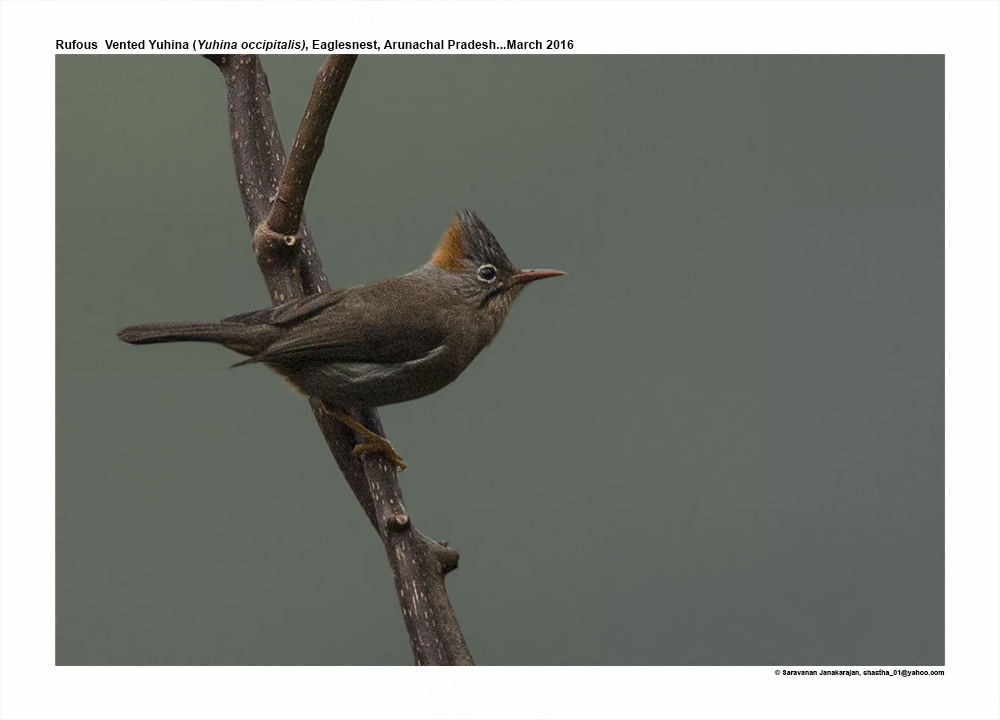Rufuos-vented Yuhina

Rufous-vented Yuhina Yuhina occipitalis
Etymology:
- Yuhina : Named after “Yuhinof the Nipalese”
- Occipitalis : Latin word for “ of the back of the head”
Vernacular Names: Lepcha: Turringing-pho
Distribution in India:Resident of Himalayasin India.
Description: Size 12–14 cm; wt. of10–16 g. It is large greyish-brown Yuhina with rufous nape and vent, prominent crest, slightly forked tail. The nominate race has side of forehead pale rufous-buff, forehead with blackish tips, elongate and erectilecrown feathers are dark greyish-brown, central rear crown with slightly greyer tips, those at side are tipped rufous-chestnut. The upper nape is rufous-chestnut, lower nape is mid-grey, mantle and back are mid-brown with vague pinkish tinge, rump and uppertail-coverts are paler, drab olive-brown. The tail is dark brown, outer fringes are paler; upperwing is dark brown, but outer fringes of upperwing-coverts, tertials and secondaries are slightly warm-tinged mid-brown, primary coverts are slightly darker than upperparts. The lores are dusky; ear-coverts are pale pinkish-grey with whitish shaft streaks, rather broken submoustachial streak blackish. The chin, throat, breast and area behind ear-coverts are pale vinous-pinkish, central belly is warm buff. The lower belly, thighs and undertail-coverts are rufous-tan; iris is brown with white orbital ring; bill is reddish-brown, reddish-grey or pinkish; legs are yellow to dull reddish-brown. Both the sexes are similar. The juvenile has shorter crest than adult, rufous on nape is paler, less vinaceous on breast.
Habitat: It is found in broadleaf evergreen forest, particularly oak-rhododendron forest. It is found from 2250m up to 3900 m and descending to 1300 m in winter.
Food habits: It eats beetles, wasps and other insects, berries, flower nectar,seeds and sugar-rich sap from bark.It is usually found in small parties, often in association with mixed feeding flocks which may contain other small babblers. It forages in high foliage, on moss-covered trunks and branches and in bushes.
Breeding habits: They breed in Apr–Jun. The nest is built by both sexes. The nest is a cup of moss and leaves, lined with fine roots, built into large lump of moss which forms a dome over nest in a fork of small tree;. They lay a clutch of 2 eggs. The incubation is done by both sexes. The incubation period is for 13–14 days. The young are provisioned by both sexes.